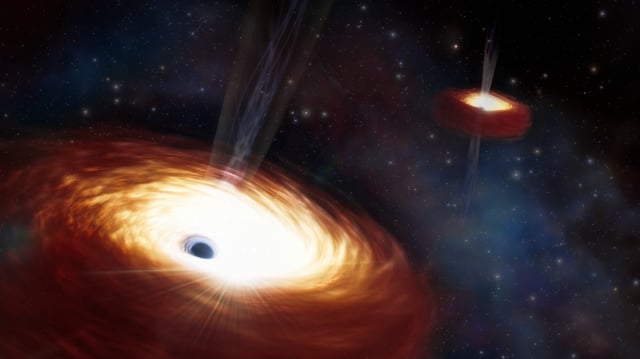Overview
- Two supermassive black holes in the elliptical galaxy B2 0402+379 form the heaviest binary system ever discovered, with a combined mass of 28 billion solar masses.
- The black holes are separated by just 24 light-years, the closest distance ever measured for such a pair, yet their merger has been stalled for over 3 billion years.
- The massive size of the black holes has scoured their surrounding area of stars and gas, leaving insufficient material to drive them together for a merger.
- Archival data from the Gemini North telescope was crucial in determining the black holes' mass and understanding the dynamics of their stalled merger.
- The discovery challenges existing theories on supermassive black hole mergers and highlights the role of mass in determining the fate of these cosmic giants.
